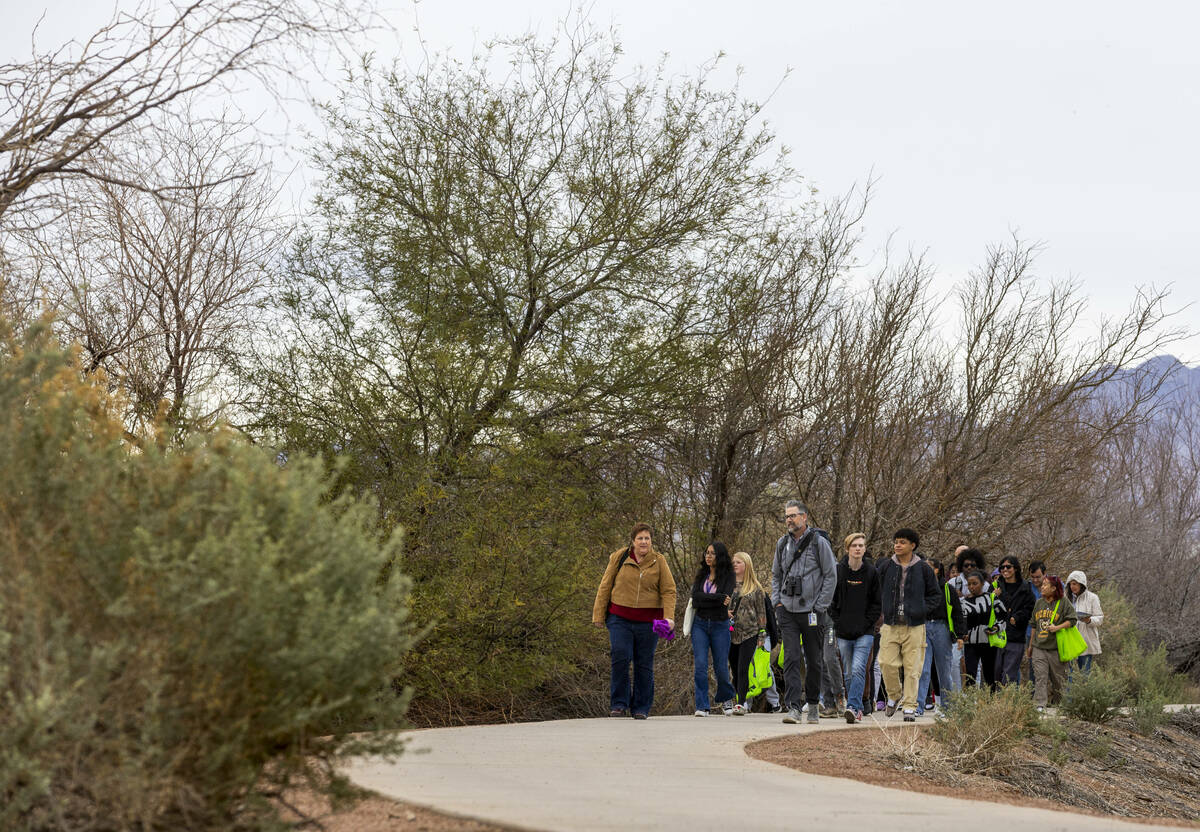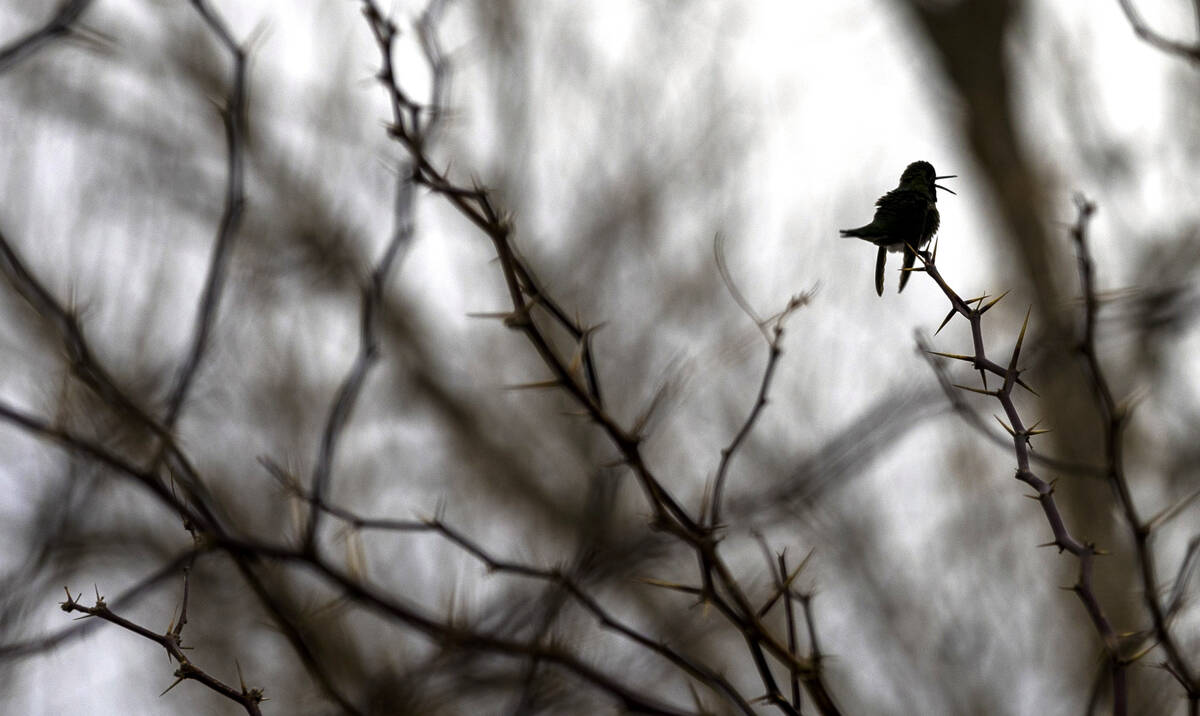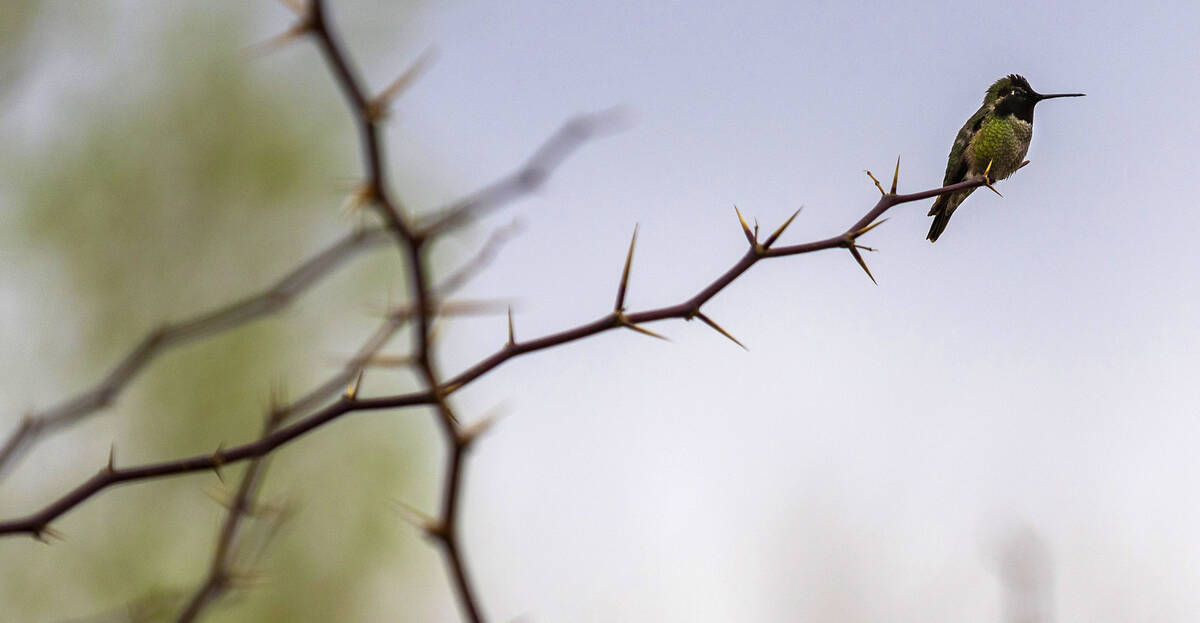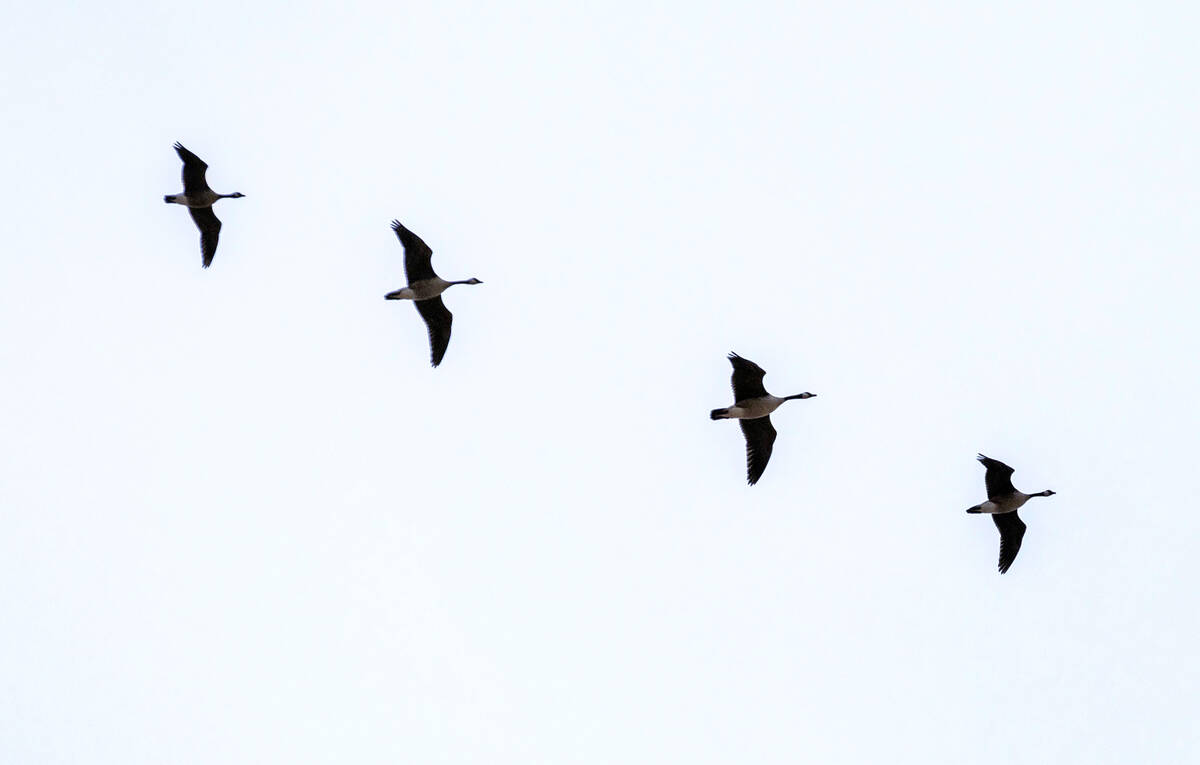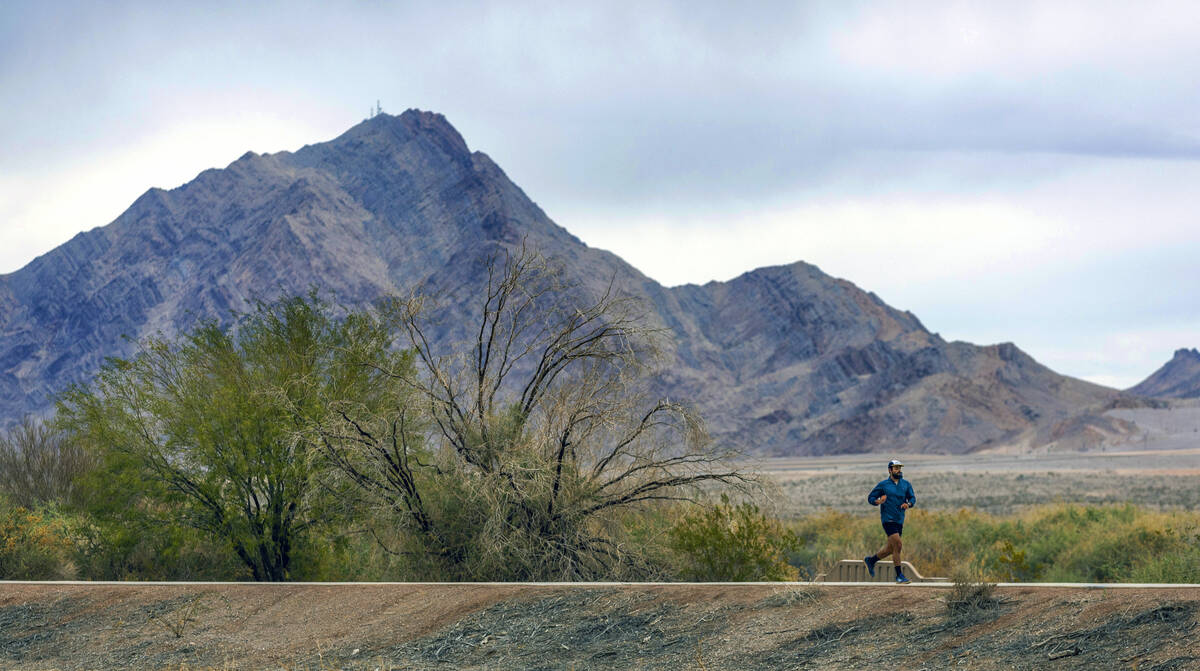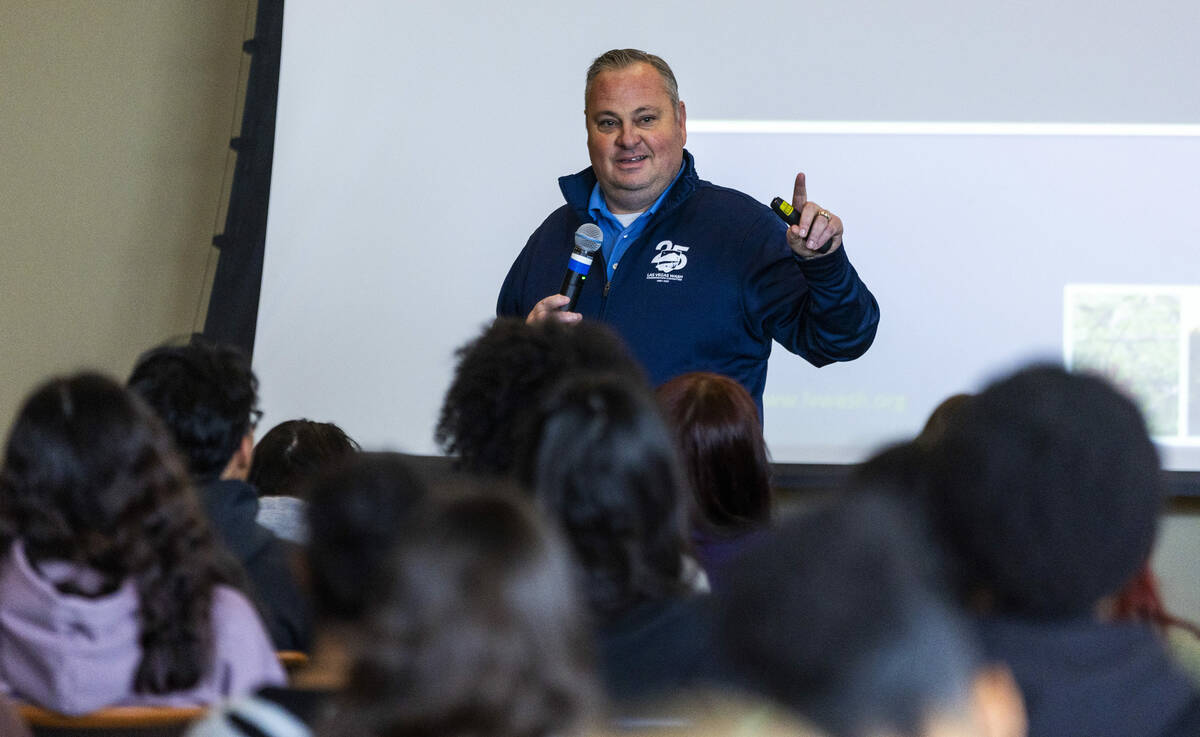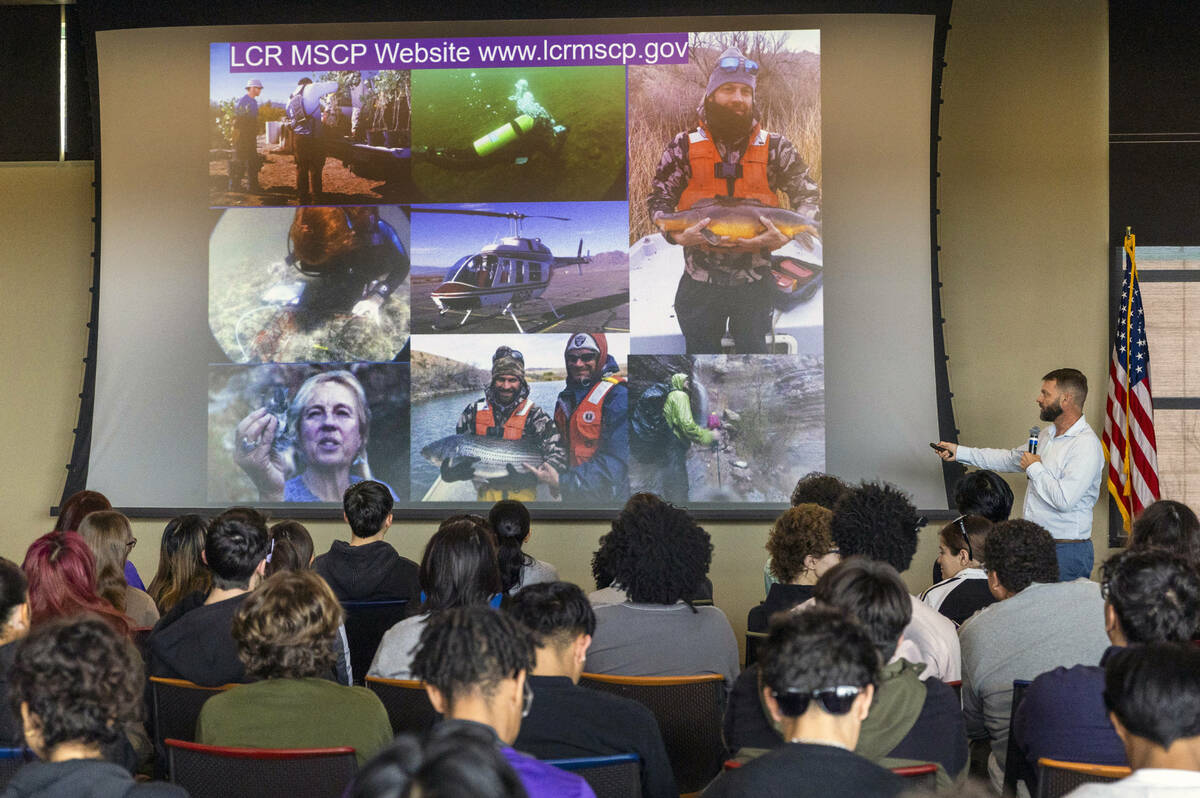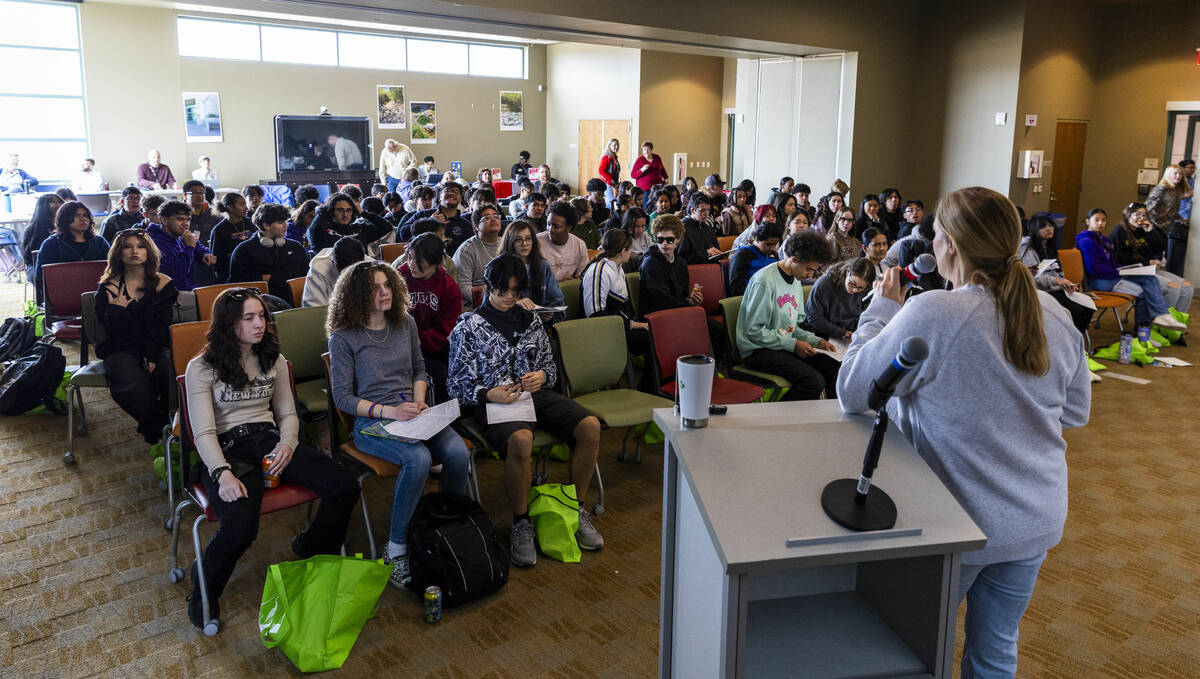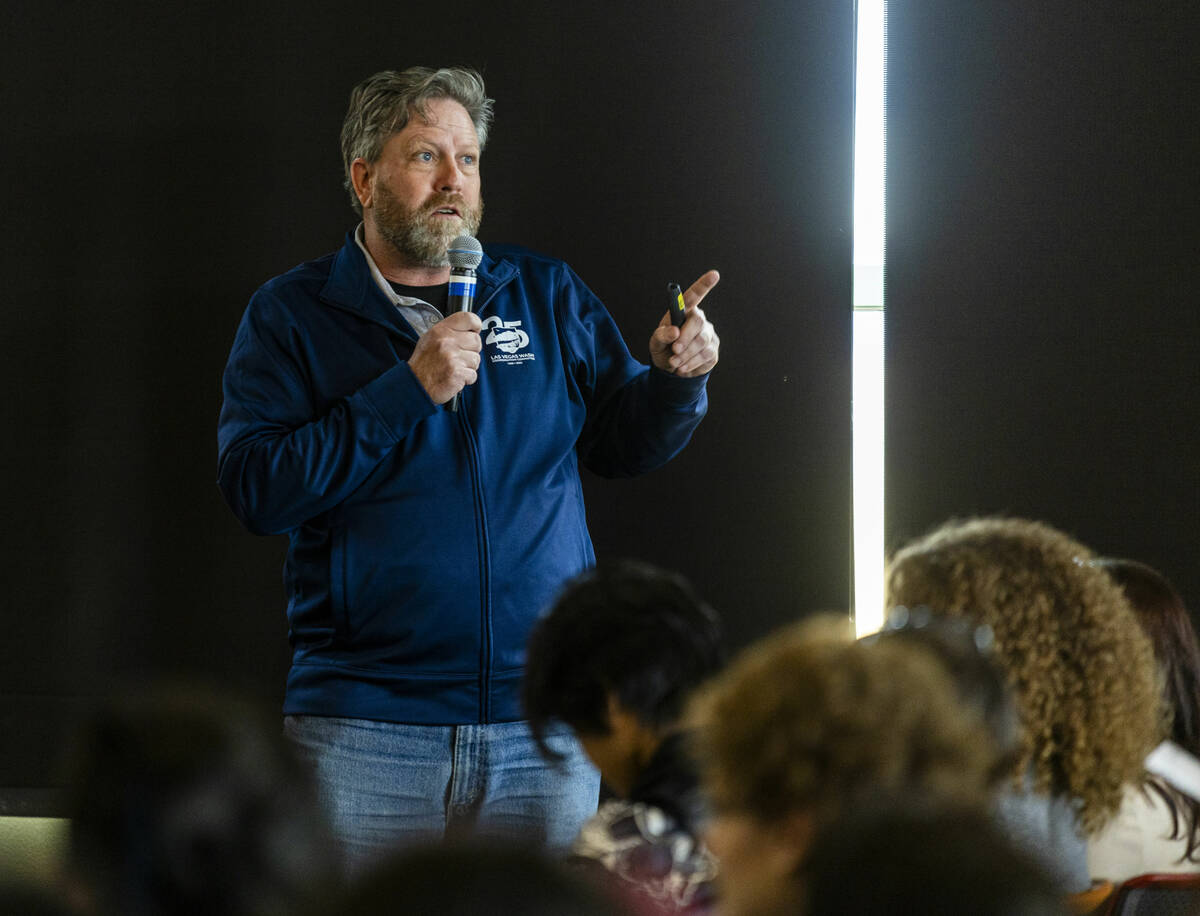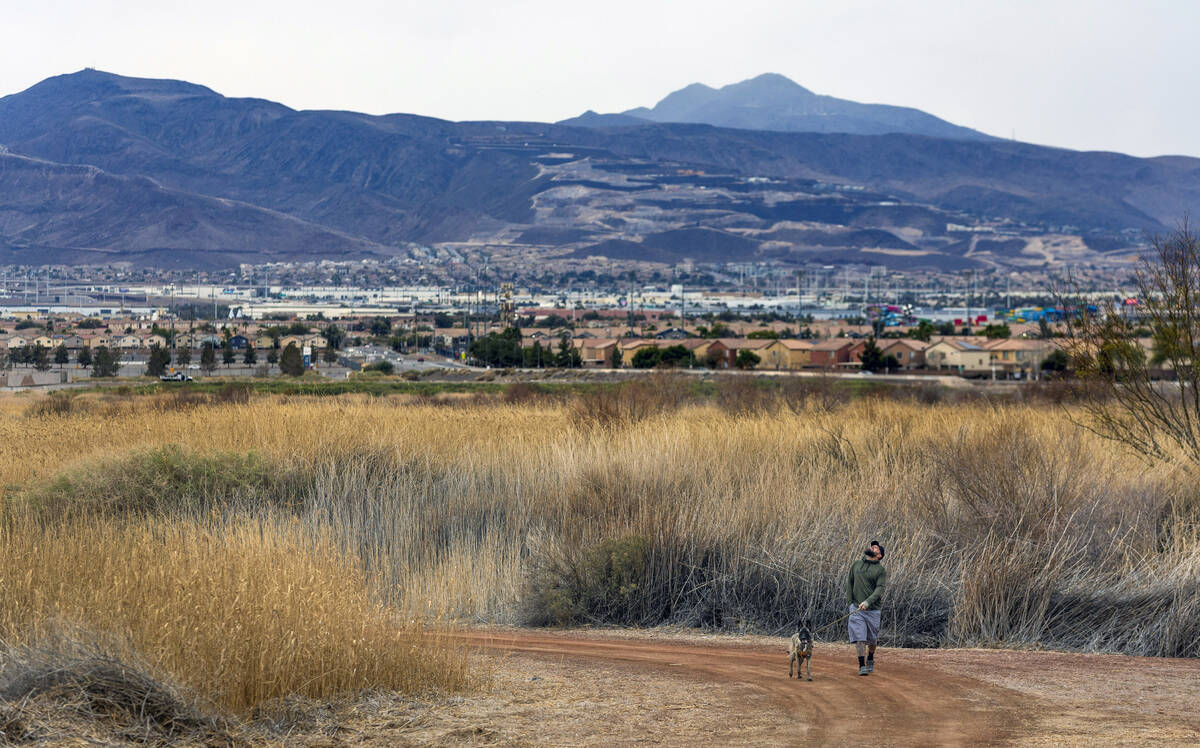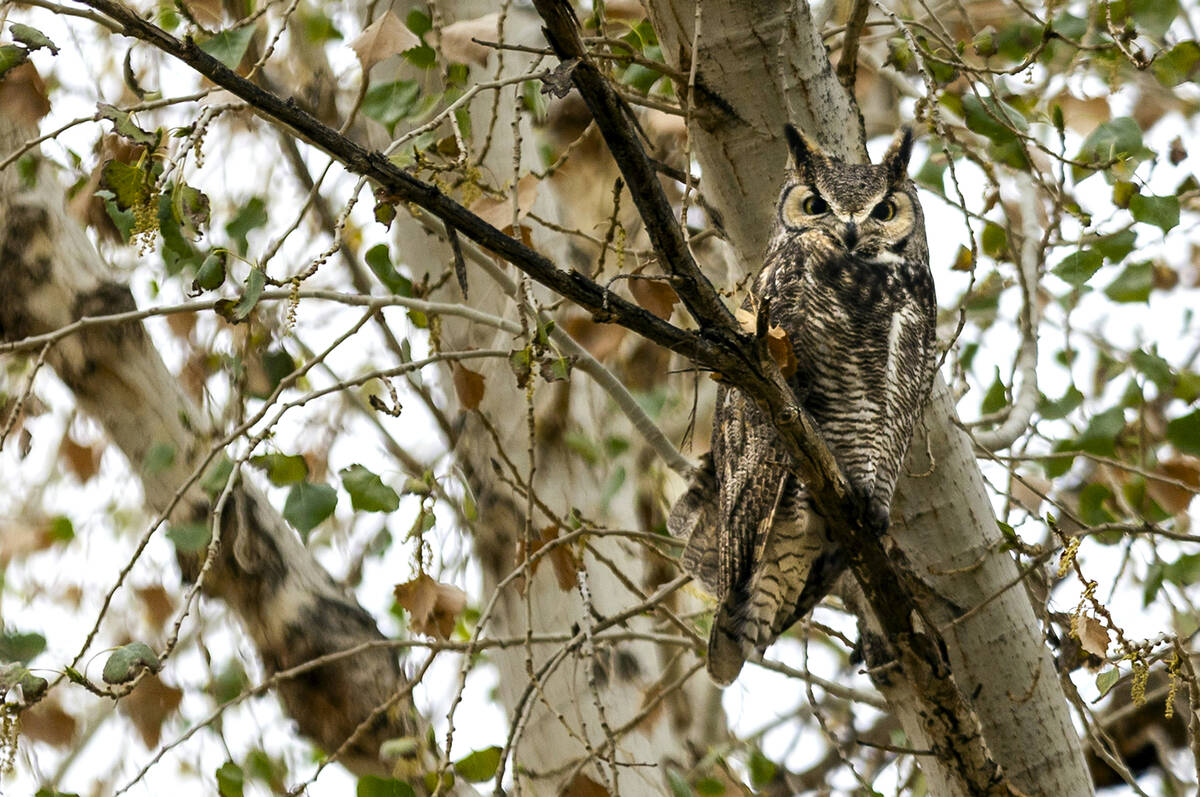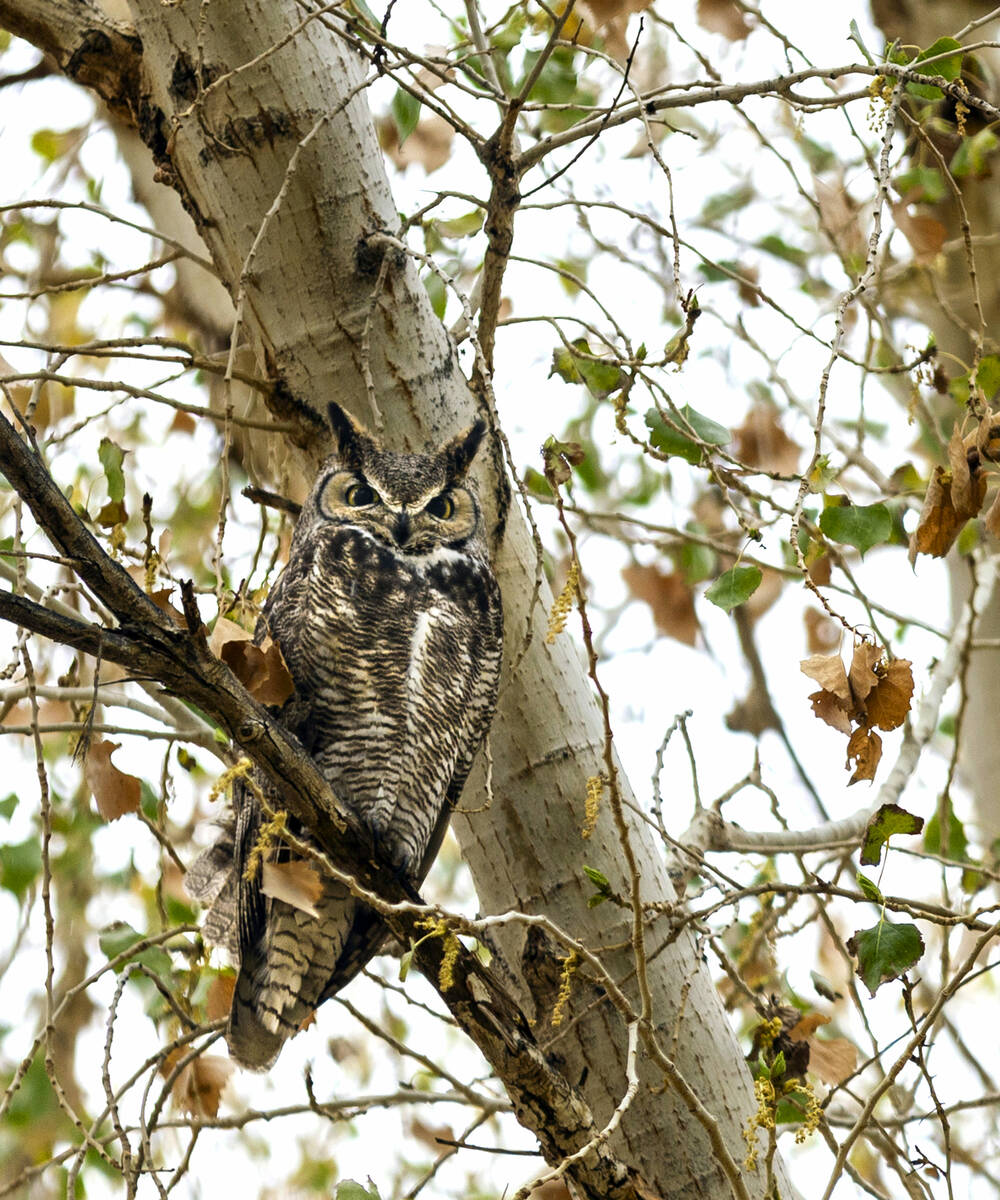Clark County students tour ‘nature’s kidneys’ ahead of World Wetlands Day
Leva Rohani didn’t spend her Thursday within the usual confines of her Advanced Placement environmental science classroom.
Rather, the 17-year-old Durango High School junior explored the desert in a cold drizzle with her classmates, learning about what seems to be one of the Las Vegas Valley’s best kept secrets — its wetlands that she didn’t know existed.
“I didn’t know there were so many conservation efforts happening in Nevada,” she said. “I learned a lot.”
Rohani was one of about 200 high school juniors and seniors who came together at Clark County Wetlands Park over two days to learn how to be stewards of their community’s environment. The event, which has seen different iterations since 2012, is hosted annually in celebration of World Wetlands Day.
Nevada is the nation’s driest state. Less than 5 percent of the state is covered in wetlands, and those areas provide critical habitat for plants and animals in the Mojave Desert, especially migratory birds.
In the valley, the Las Vegas Wash serves this purpose.
Located upstream of Lake Mead, it carries reclaimed water, runoff, groundwater and stormwater into the reservoir. The 12-mile strip carries 200 million gallons of water a day and acts as “nature’s kidneys” by filtering out harmful chemicals and trash, experts said.
Students, some of whom have lived in the area their whole lives, still find themselves surprised to learn of the Las Vegas Wash and other wetlands, Southern Nevada Water Authority environmental biologist Debbie Van Dooremolen said.
The goal of getting students out into natural Nevada is to show them that there are viable careers protecting the environment, she said. Representatives from the University of Nevada, Las Vegas and the University of Nevada, Reno took the chance to connect with the students about upcoming deadlines.
The event also presents a chance for experts to educate young people about drought conditions in the Southwest.
“Any time we bring people out to the Las Vegas Wash, they’re like, ‘Wait, this is here? There’s a river in the desert?’” Van Dooremolen said. “The eyes pop out of their head.”
Throughout the morning, experts from the water authority, National Park Service, Bureau of Reclamation and The Nature Conservancy delivered presentations on invasive plants, marsh restoration, endangered species and other issues.
Advanced Technologies Academy science teacher Mary Shane said she’s taken dozens of students to visit the wetlands throughout the years. Even if they don’t pursue careers in conservation, she said, it’s vital for everyone to have a working understanding of how their actions impact their environment.
“You can show them pictures, but it’s very sterile,” Shane said. “If you can actually take them to an active wetlands where they’re doing restoration, they can see what they’re learning in class in action. Then it becomes more real.”
Biologist David Syzdek highlighted the water authority’s efforts to protect the endangered Moapa dace, a fish the length of four paper clips that’s only found in the headwaters of the Muddy River. Some students said they hadn’t heard of the fish before.
There are fewer than 1,000 left, according to the most recent count, but the number is growing, he said. A Nevada Supreme Court case released last week affirmed the state engineer’s ability to protect the species through limiting water use in the basin.
“We are all on this planet together,” Syzdek told the students. “Every species and person is precious.”
Tim Ricks, water authority environmental biologist, encourages all Nevadans to take some time to get outside during World Wetlands Day, which falls on Friday. The importance of conserving wetlands across the country cannot be overstated, he said.
“Just get out there,” Ricks said.
Contact Alan at ahalaly@reviewjournal.com. Follow @AlanHalaly on X.



